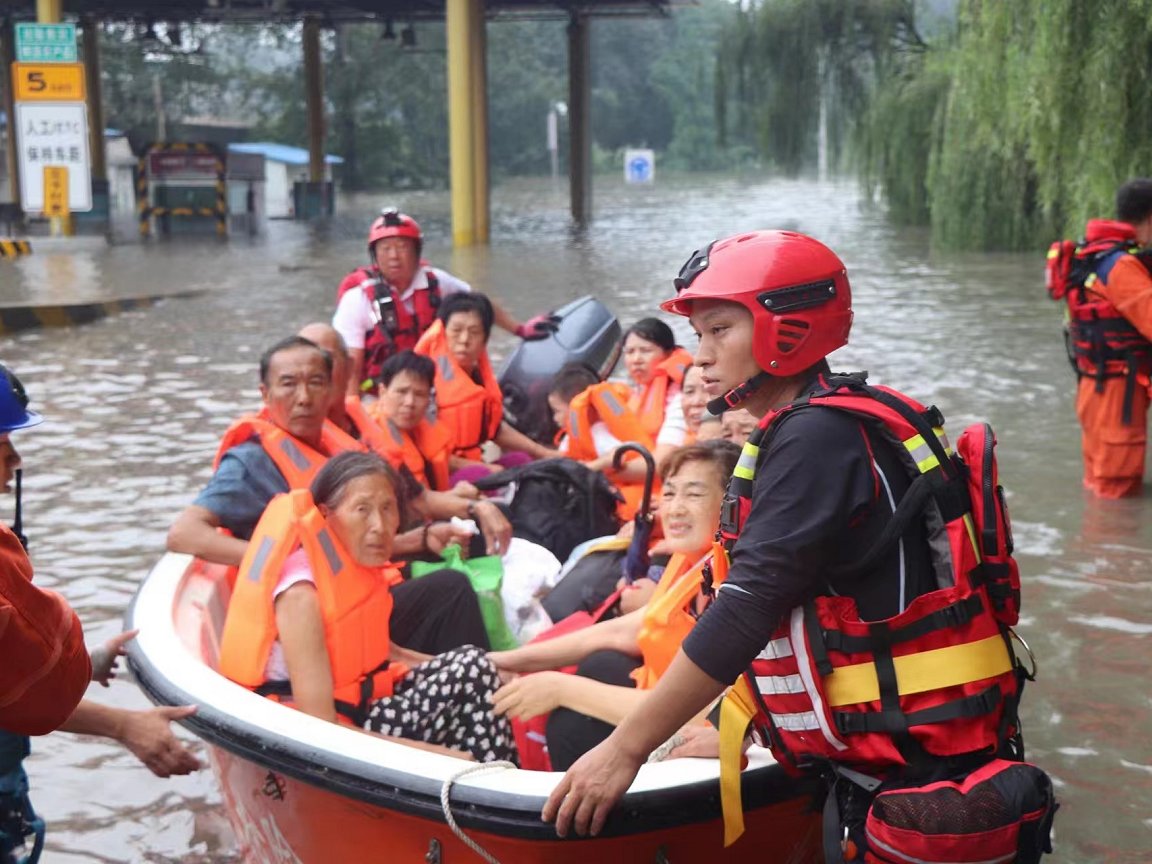
IFRC: Climate wreaks havoc in Asia Pacific, causing relentless floods, disease, lethal heat

(This story – an IFRC press release issued jointly in Kuala Lumpur, Dhaka and Beijing – appeared first yesterday.)
Countries across Asia Pacific are reeling from multiple disasters that are wreaking havoc in the region, and climate analysts attribute this to a phenomenon called El Niño.
The International Federation of Red Cross Red Crescent Societies (IFRC) urges authorities and humanitarian organizations to brace for multiple disasters hitting simultaneously, with more intensity.
These past few months, the IFRC has released eight Disaster Response Emergency Fund (DREF) allocations for climate-related events: three for dengue to Bangladesh, Nepal, and Sri Lanka: three for floods, to Mongolia, Pakistan, and Afghanistan; one for a tropical cyclone to Bangladesh; and one for a cold wave event to Mongolia.
Although the full impact of the phenomenon is expected in the months of September this year to March next year, many regions in Asia and the Pacific are already facing multiple hazards now, and they all point to a deteriorating climate situation.
In Bangladesh, dengue infections have swarmed the nation and there have been almost 30,000 new cases this year, almost five times higher than last year’s numbers. Moreover, local public health experts confirm that many people are being infected with multiple types of dengue, making the treatment complicated.
‘China saw one of the largest rainfalls Beijing has experienced in the past 140 years’
Sanjeev Kafley, Head of IFRC Bangladesh Delegation says: “We are working closely with the Bangladesh Red Crescent Society (BDRCS) and health authorities to combat the situation.
“In 85 dengue hot-spot wards in the cities of Dhaka, Chattogram, and Barishal, our volunteers are focusing on public awareness and prevention efforts. We are progressing to procure testing kits for our health authorities as well as supporting the availability of platelet concentrate through the blood banks of BDRCS. We are supporting in all intervention points, from life-saving areas to preventative measures.”
The IFRC’s climate-mitigation efforts at national levels in different countries are towards improving water management systems, curbing mosquito breeding, strengthening surveillance and monitoring systems to track outbreaks and increase health care capacity to managing cases and providing treatment.
Olga Dzhumaeva, Head of IFRC East Asia Delegation says: “Torrential rains and floods hit East Asia severely this summer. North, north-east and some regions in southern China saw one of the largest rainfalls Beijing has experienced in the past 140 years.
The capital city Ulaanbaatar and 13 provinces in Mongolia, central parts and many provinces of the Republic of Korea, and in the Kyushu region of Japan also suffered from severe impact of extreme rains in July.
“As a result, millions of people in East Asia were greatly affected and displaced, and roads, bridges, homes, and infrastructures were very badly damaged, many beyond repair.
“In responding to the situation, our colleagues and volunteers from National Societies in China, Japan, Mongolia and Republic of Korea have been deployed to the front lines, activating their emergency responses, making every effort to evacuate people trapped by the floods and debris, and urgently sending relief supplies such as blankets, tents, folding beds to the affected areas.”
The IFRC, National Societies, and its partners believe we equally need to focus on resilience building through inclusion of nature, anticipation, adaptation and mitigation.
Early or anticipatory action, for example, whereby funds are proactively allocated based on weather forecasts to support people at risk before disaster strikes is an important emphasis in the context of rapidly increasing climate hazards.
‘These are not stand-alone events.
They are connected’
Luis Rodriguez, IFRC Asia Pacific, Lead for Climate and Resilience says: “These events were more intense than usual due to the prevailing warming conditions, and this brings heavier precipitations, triggering cyclones, rains, and floods. These climate factors also heavily influence the dynamics of infections.
“Increased rainfall creates new and conducive habitats for larvae or viruses, and increased temperature accelerates the development of insects carrying viruses and virus incubation time.
“Severe changes in temperature and precipitation patterns due to climate change will enable the spread and transmission of disease in areas that are currently considered low risk or dengue free. These are all not stand-alone events. They are connected.”
In anticipation of more extreme weather events that will hit more regions in the Asia Pacific, National Societies together with the IFRC are carrying out heavy preparedness measures such as heatwave action planning, simulations and drills, prepositioning of relief stocks, and evacuation and rescue equipment, and urgent refreshers on procedures and regulations for volunteers, staff, and technical teams.
Moreover, the DREFs ensure National Societies can act speedily and efficiently and this means millions of lives and livelihoods are saved.
Chinese Red Cross personnel have this week been responding to floods in Hebei, Tianjin and in Beijing, which has seen some of the most intense rainfall recorded in the past 140 years. (Photo: Chinese Red Cross Foundation via IFRC)